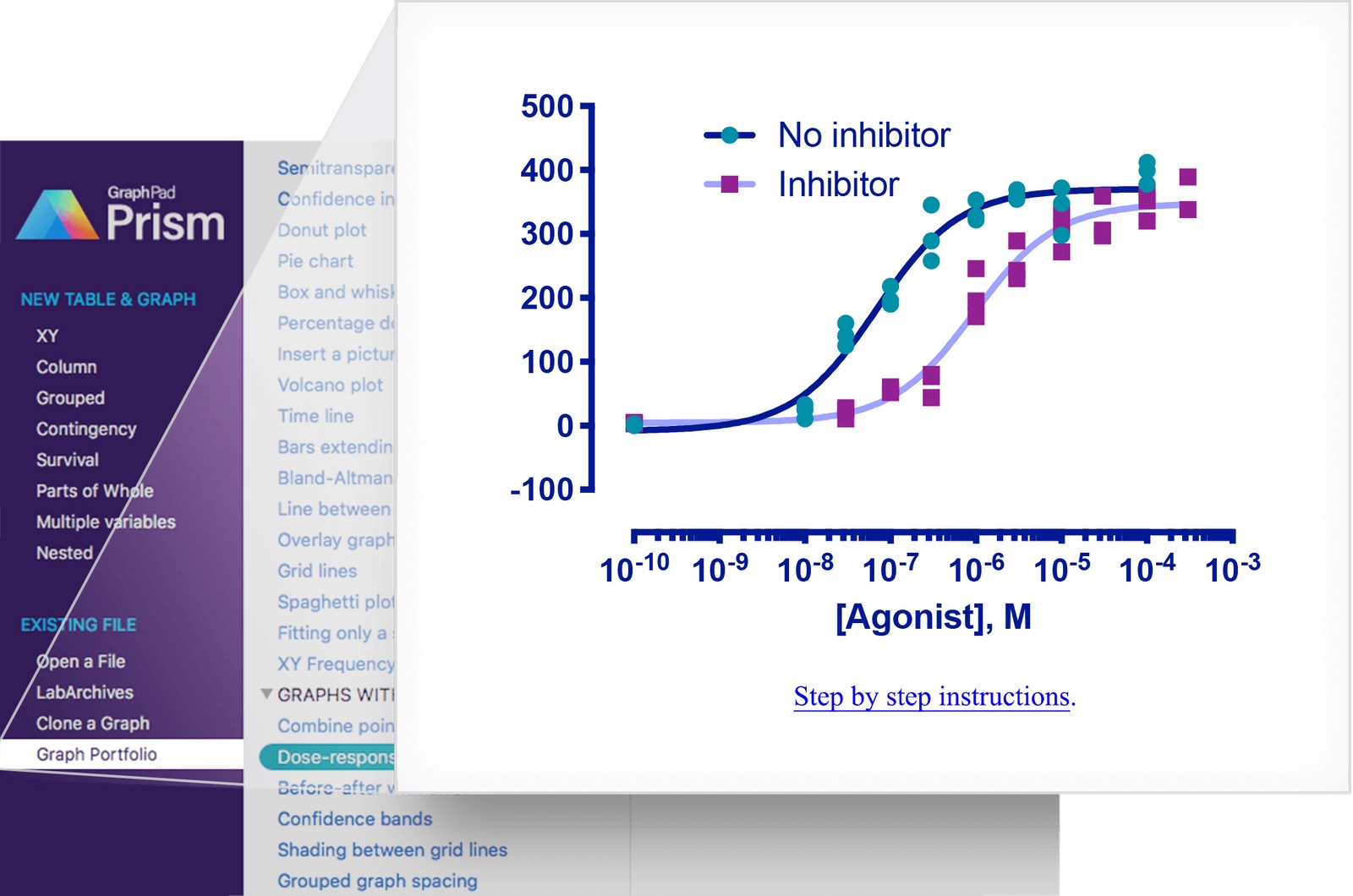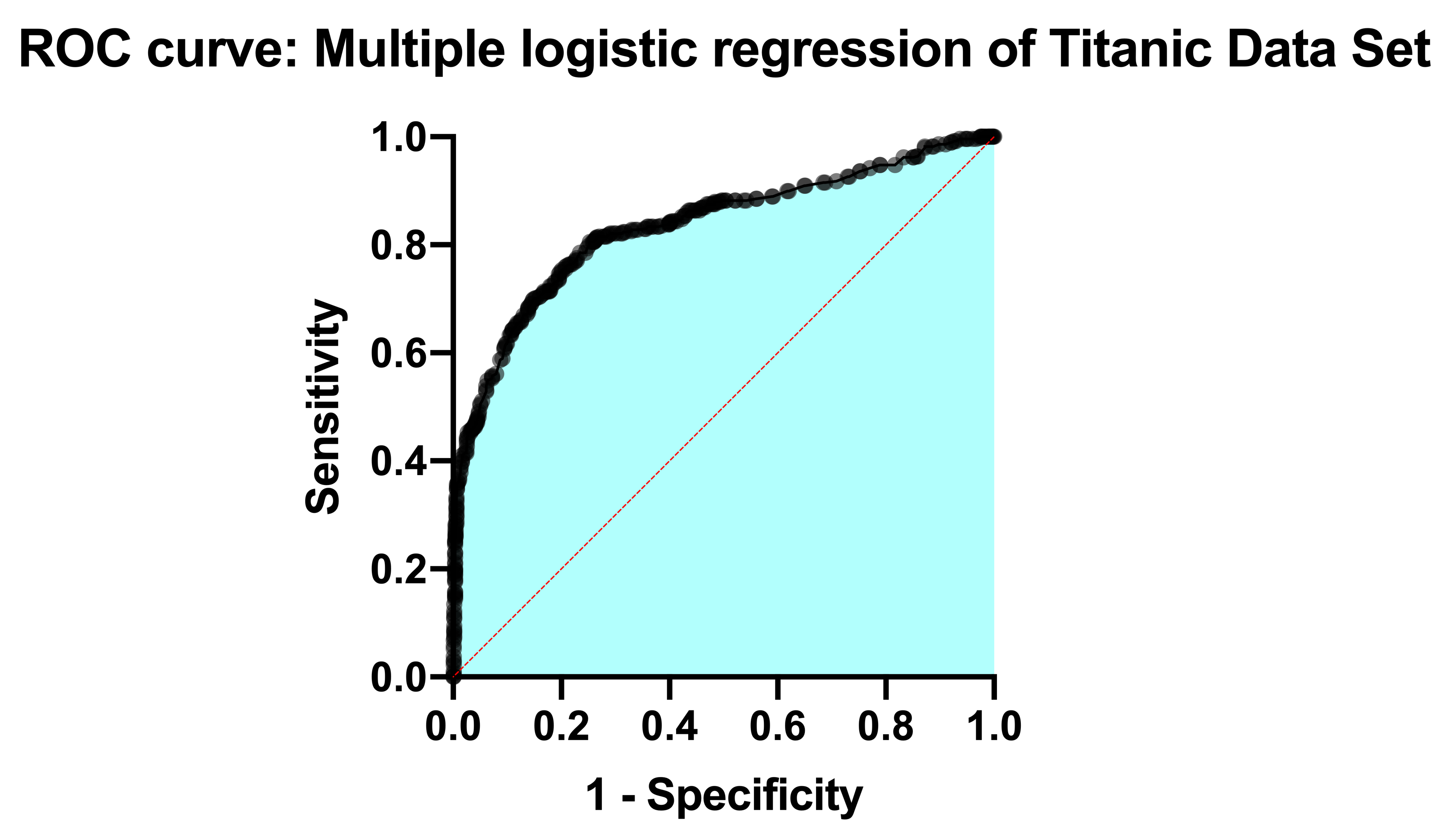

To run simple logistic regression, click the Analyze button in the toolbar and choose simple logistic regression from the list of XY analyses.

Using this method, you could enter a “1” to answer the question “yes” and a “0” to answer the question “no.” Tip: An easy way to keep track of which outcome is coded as a 1 and which is coded as a 0 is to use a yes/no question as the title of your Y column. Prism will not perform simple logistic regression (or multiple logistic regression) if your outcome variable is not encoded as 0s and 1s ( read more about binary outcome variables). Otherwise, if you want to enter your own data, be sure that the Y values are binary and encoded as strictly 0s and 1s. If you would like to see how Prism works on a sample data set, choose the sample data: Simple logistic regression. To enter replicates, simply add each replicate on its own row with its associated X value and observed outcome. Be sure to select the option “Enter and plot a single Y value for each point.” Simple logistic regression in Prism currently does not allow for replicates in subcolumns. Select which visualizations you would like Prism to generate from the fit.From the Welcome or New Table dialog, choose to create an XY data table. Select from a range of various metrics that provide some insight into how well the model fits the entered data. Specify which results Prism should report (note, additional results options on Goodness-of-fit tab). Choose a second model and specify how the fit of the two models should be compared. The reference level generally indicates a “baseline” or “usual” level of the categorical variable and is important for results interpretation. Set a reference level for any categorical variable in the specified model.

Specify which other variables to include as dependent variables, and choose any interactions or transforms you wish to include in the model. Add labels for the dependent variable outcomes 1 and 0. Choose which variable is the dependent (Y) variable. The multiple logistic regression dialog has five tabs: Run the multiple logistic regressionĬlick Analyze, and then choose multiple logistic regression from the list of analyses for multiple variables tables.

Prism will allow you to add interactions automatically in the parameters dialog 3.
#Graphpad prism 5 logistic regression code#
Note that there is no need to code interactions manually. However, Prism will handle all of this automatically for categorical variables entered into the model simply enter the names (text) of the levels for the categorical variable directly into the data table. One good source to learn about these coding methods is Glantz and Slinker, cited below. If a categorical variable has three or more possible values, you could manually do the extra work to encode this variable yourself. "Male" and "Female") could be entered as a continuous variable using "1" and "0". This process is known as "dummy encoding"and is what Prism does behind the scenes for categorical variables entered into the model.Įarlier, it was mentioned that a categorical variable with two levels (i.e. Be sure that the variable type is correctly set to "Categorical".Īnother way of entering information for a categorical variable with only two possible levels is to enter the values of 0 and 1 (representing each level) and setting the variable type to "Continuous". There's no need for you to encode categorical variables manually, and you can simply enter the (text) levels of the categorical variable directly into the data table. Other variables (predictor variables) can also be continuous or categorical. For example, if studying mice, you could simply enter "Male" and "Female" directly into the data table, or you could enter “0” for male and “1” for female. For multiple logistic regression, the dependent (Y) variable must contain only two values: this can either be a continuous variable with values 0 and 1, or it can be a categorical variable with only two levels. you can enter "Male" and "Female" instead of "1" and "0"). Continuous variables must be entered as numbers, while Categorical variables can be entered using text for the names of the levels of the variable (i.e. Enter dataĮach row represents a different observational unit, for example an individual, animal, or experimental replicateĮach column represents a different variable. If you are just getting started, you can choose to use the sample data for multiple logistic regression 2. From the Welcome or New Table dialog, choose to create a multiple variables data table.


 0 kommentar(er)
0 kommentar(er)
